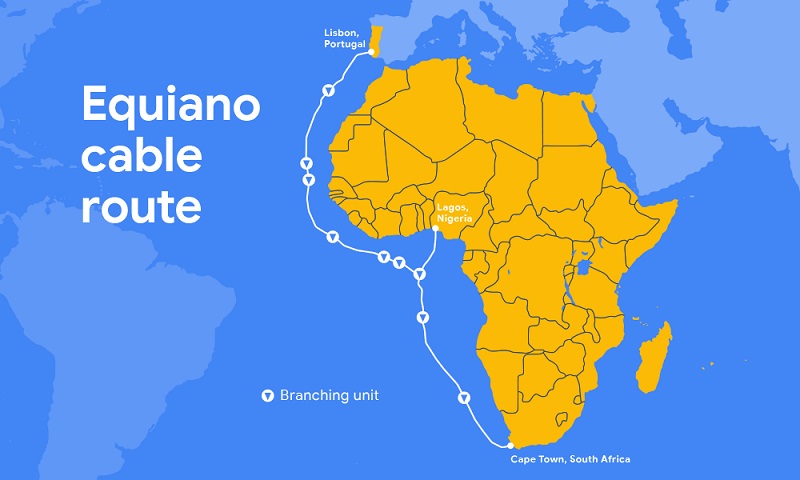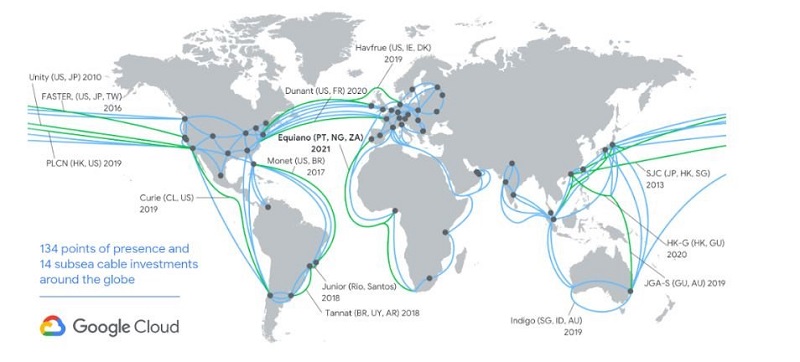
Google has grand plans for their Stadia gaming platform that
It’s a grand ambition and one that could definitely usher in a change to the way we all play video games if It weren’t for one big problem – internet connectivity, bandwidth and latency. Not only do few people have access (though this is growing) to a fast enough internet connection that could make this

Google has revealed the plans in a new statement which says the company will lay a new cable that will use state-of-the-art infrastructure based on
(It) will be the first subsea cable to incorporate optical switching at the fibre-pair level, rather than the traditional approach of wavelength-level switching.
The new cable, which will

Google isn’t the only company interested in laying new cables to South Africa as Facebook has also previously mentioned a desire to build an underwater data cable that would encircle Africa. That was just a long-term vision from Facebook though as Google has shown intent here and already signed the agreement with Alcatel Submarine Networks to make this a reality.
So exciting news for people who were looking forward to Google Stadia and Google’s future cloud platform, though the only obvious bad new being that we will potentially have to wait till 2021 to really get the full benefit of it all.
Last Updated: July 1, 2019





















Admiral Chief Umbra
July 1, 2019 at 13:27
I’ve always wanted to know about the cable route. Is it mid-point, floating, or is it on the seabed?
Anyone have suggestions on a documentary/info-graph I can watch/read?
Admiral Chief Umbra
July 1, 2019 at 13:27
https://www.submarinecablemap.com/
Admiral Chief Umbra
July 1, 2019 at 13:27
NO FIBRE TO ANTARCTICA FFS
Admiral Chief Umbra
July 1, 2019 at 13:32
https://youtu.be/1ex7uTQf4bQ
Admiral Chief Umbra
July 1, 2019 at 13:32
https://sites.google.com/site/bit4554fiberoptics/_/rsrc/1335896002417/how-it-works/Submarine-cable-system.png
For the Emperor!
July 1, 2019 at 13:52
Do they all come with a shark? Does it have laser beams?
Admiral Chief Umbra
July 1, 2019 at 13:59
Of course, hence my other video above
G8crasha
July 1, 2019 at 14:05
And then the wholesale purchasers and infrastructure owners (i.e. the ISPs/FTTH/FTTB/ADSL/Wireless/Mobile Data providers) come into the picture, which increases costs for us as the end user.
Raptor Rants
July 1, 2019 at 13:33
Caveat – If they don’t have local datacenters then this won’t help. Light physically cannot travel faster than 120ms at last measure I believe? For traveling between ZA-Europe and back.
Admiral Chief Umbra
July 1, 2019 at 13:36
Have you not heard about light v2.1?
Raptor Rants
July 1, 2019 at 13:59
LOL. Light has been patched. It now runs at double the speed. Science equations will be affected. Please report bugs on the Universe Feedback thread.
Guz
July 1, 2019 at 14:05
God called, he wants his source code back and to stop messing with his system settings,
Admiral Chief Umbra
July 1, 2019 at 14:29
Not double, 2.1 times the speed. PAT PENDING
Frik van der Hewerskink
July 1, 2019 at 14:54
Yeah on +- 18000km (UK to SA) it takes about 60ms for light to travel, this is just pure light speed. So ping would be double that.
Raptor Rants
July 1, 2019 at 15:01
yeah so I was right. Hehe. Around the 120ms mark which is just the pure light side. This ignores all the overheads etc.
So yeah, we’d need a local server to gain any benefit from this whatsoever. And we’d need an ISP that prioritizes traffic over this line and have the wallet to afford said ISP etc etc
Admiral Chief Umbra
July 1, 2019 at 13:33
Admiral Chief Umbra
July 1, 2019 at 13:45
Just remember the shark repellent